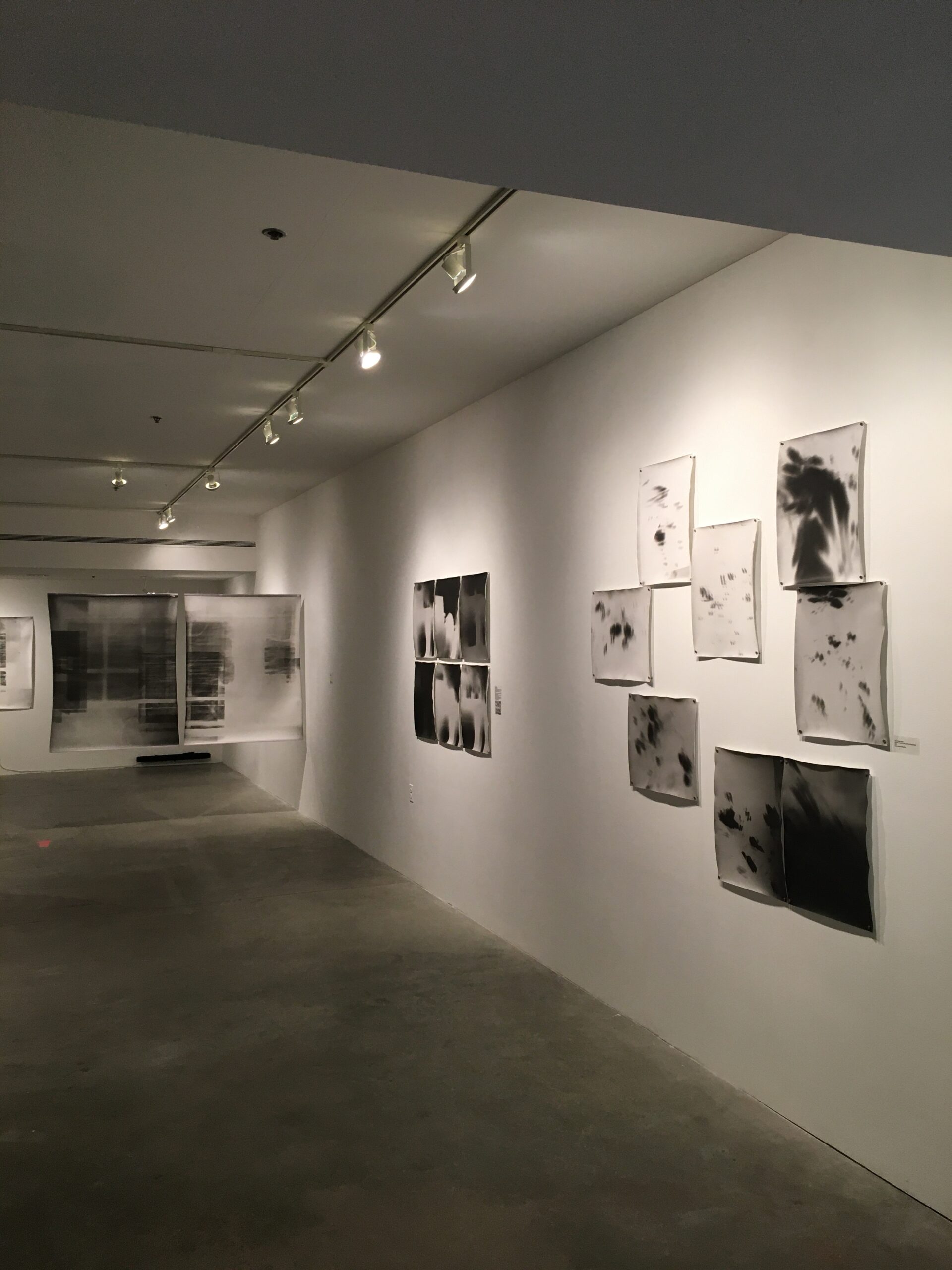By Sydney A. Stalnecker
There are new shadows dressing the walls of the McDonough Museum of Art. “The Absence of Light Within These Walls” is one of four new galleries currently on display.
Amy Giese, a Boston-based artist and teacher, created skiagrams — a Greek term meaning “to write with shadows” — based on the different shadow patterns along the walls of her home without a camera. She has worked without a camera for over a decade.
“All of the pieces in the show are actually the direct recording of the light and shadow patterns in a specific moment straight onto the photo paper,” she said.
At night, Giese unrolled darkroom paper, a type of photographic paper, in different rooms of her house to capture the shadow patterns.
“[With] traditional black and white darkroom paper, any place that’s hit by light gets dark and any place that is not hit by light stays white,” Giese said.
Sharon Koelblinger, an adjunct professor of art at Youngstown State University, works with darkroom paper and expanded on the process.
“With darkroom paper, basically, there is a light-sensitive silver coating that is on the surface of the paper,” Koelblinger said. “That silver darkens when it is exposed to light.”
Creating images without a camera is not the only unique aspect of Giese’s work. She attaches an element of sound to each skiagram as well.
“Once I take a digital photograph of the mural, I can translate each pixel into a note,” Giese said. “Then I make a sound piece out of all of those notes.”
Claudia Berlinsky, director of the McDonough Museum, said the sound is very innovative and unique. She said it enhances the overall experience of the gallery.
“The images themselves have a sort of haunting quality to them because they are very atmospheric,” Berlinsky said. “The sound is really very similar, and so I think it’s really going to enhance the experience in the gallery.”
The two larger installations have speakers that alternate sound pieces playing on a loop. One of the two grids, which is a collection of smaller skiagrams, has a QR code linked to a sound piece on Giese’s website.
The gallery consists of two grids, four skiagrams from previous collections and a new collection titled “Dwelling.” The seven skiagrams in “Dwelling” were created in Giese’s living room and are arranged in the gallery to resemble the shadow patterns of the room.
Berlinsky said Giese gave precise instructions on the arrangement of the gallery.
“Amy was very thorough, and she sent out very exact instructions on how to use the hanging devices,” Berlinsky said. “There will be a couple of prints that are suspended from the ceiling.”
Giese and Berlinsky met at a Society for Photographic Education conference in Cleveland. Shortly after, the pair began brainstorming ideas for a future exhibition.
Originally, they planned for Giese to work directly with YSU students last fall to create artwork for the exhibition based on the shadows of campus. However, due to COVID-19, their plans changed.
Giese suggested making artwork of her house because it was the only place she was allowed to go.
“We both really liked the idea of it being both relevant to what we’ve all been going through but also kind of still being able to make site specific work,” Giese said.
Berlinsky said the change of plans and limitations can be seen as a spark for creativity.
“Even in times when you’re not able to do what you normally do, you can be innovative and try to find a new way to create what you want to create given your limitations,” Berlinsky said.
Giese will discuss her work during a lecture open to all YSU students March 10 at 10 a.m. via Zoom. There will be a link to the Zoom call posted on the museum’s Facebook page.
The gallery opened Feb. 26, and will be displayed until April 2. The museum is open to the public from 11 a.m. to 4 p.m. Tuesday-Saturday.
